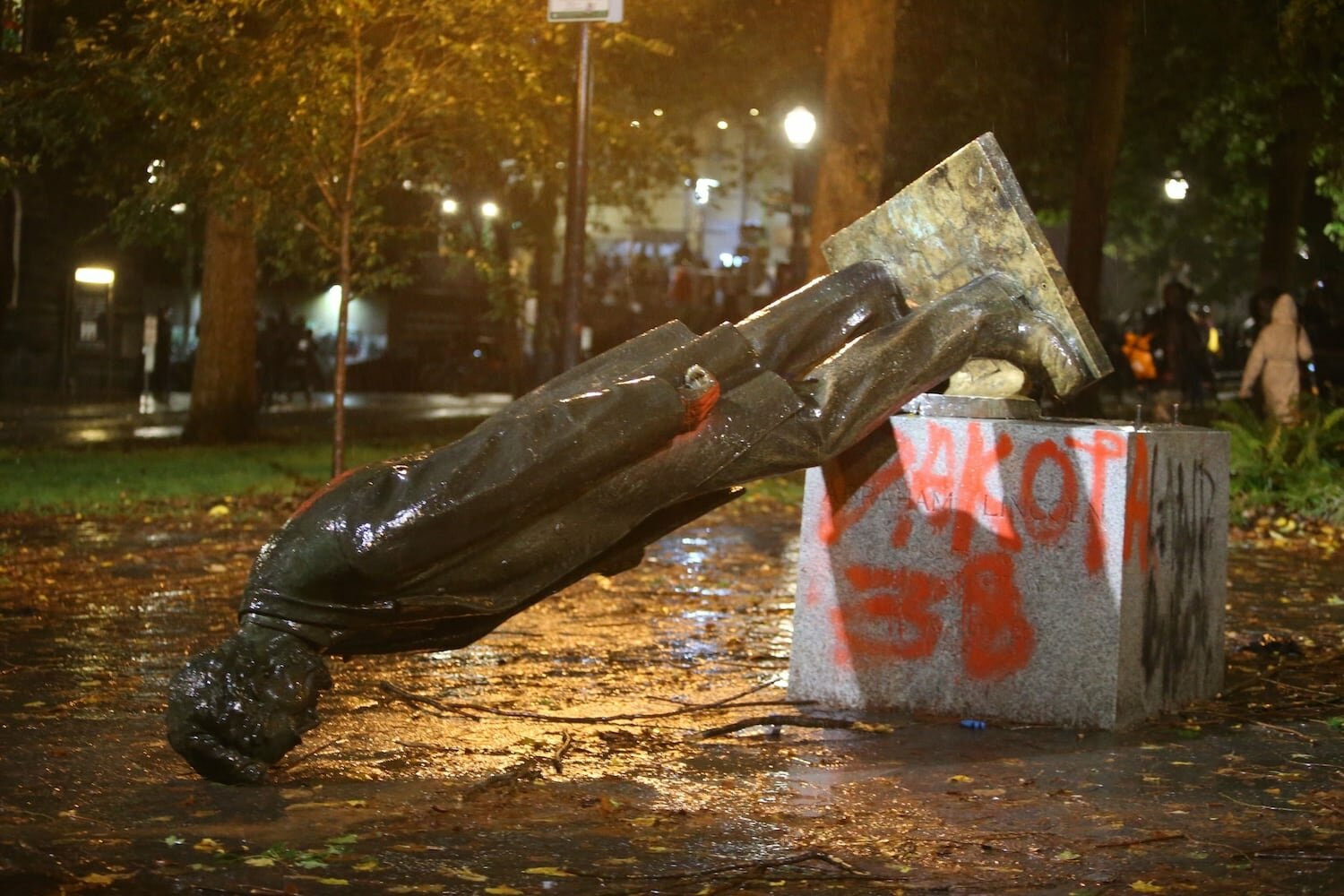A Controversial Reinstallation
In October 2020, during demonstrations known as the “Indigenous Peoples Day of Rage,” protesters in Portland’s South Park Blocks toppled statues of Abraham Lincoln and Theodore Roosevelt. Five years later, their pedestals still stand empty — stark reminders of a turbulent national reckoning with history.
Now, the City of Portland has announced plans to reinstall both statues with new interpretive signage to provide broader historical context. The Lincoln monument is expected to return in early 2026, followed by Roosevelt’s about a year later.
Yet, the challenge is clear: what one group views as contextualization, another might see as propaganda.
Also Read
Public Debate: Restore or Rethink
To navigate the controversy, Portland State University’s Regional Research Institute organized a public symposium exploring how historical monuments should be presented in modern times. The discussions revealed two sharply divided camps.
According to Deb Elliott, a research professor at PSU, one group advocated for a complete narrative—acknowledging both the achievements and harms associated with the figures. The other camp demanded the statues be restored exactly as they were.
Balancing these perspectives may prove impossible.
The Lincoln Dilemma
Abraham Lincoln’s legacy remains deeply revered by most Americans. For generations, he has been celebrated as The Great Emancipator — the moral hero who ended slavery. But recent debates have brought forward less flattering parts of his record, particularly his actions during the 1862 Dakota Conflict.
After reviewing 303 death sentences of Dakota Sioux men convicted in unfair trials, Lincoln approved 38 executions — the largest mass execution in U.S. history — while commuting 265 others. Protesters in Portland spray-painted “Dakota 38” on his toppled monument as a reminder of that event.
Oregon State University anthropology professor David Lewis, who is helping draft the new interpretive signs, sees Lincoln’s decision as politically expedient. “There could have been other ways to do it than to murder 38 people,” he said.
Still, historians like Pulitzer Prize-winner Eric Foner argue that Lincoln’s greatness lies in his capacity for growth. Over his lifetime, Lincoln’s views on race evolved significantly. “He was a product of his time, yet able to transcend it,” Foner wrote, calling this transformation a true measure of greatness.
For many Portlanders, that perspective remains persuasive. One participant in the city’s public process said, “Lincoln had a huge role in ending slavery and moving the country forward. It’s wrong to dismiss him by today’s standards without considering his full context.”
Roosevelt’s Complicated Legacy
Theodore Roosevelt, on the other hand, faces far greater scrutiny. When his Portland statue was unveiled in 1922, the 26th president was a national hero — a war veteran, reformer, and conservation pioneer. His “bully pulpit” leadership reshaped the presidency, strengthened consumer protections, and helped build the Panama Canal.
Roosevelt embodied the American ideal of willpower and resilience. Born frail and asthmatic, he transformed himself through sheer determination, becoming a symbol of strength and action.
Yet, his record on race and Indigenous policy casts a long shadow. Roosevelt supported forced assimilation and the allotment system that stripped Native Americans of communal lands. He once infamously said, “I don’t go so far as to think the only good Indians are the dead Indians, but I believe nine out of ten are.”
Lewis notes that Roosevelt’s later years showed some evolution — Indigenous soldiers served proudly in his Rough Riders regiment — but his broader worldview remained rooted in a belief in white superiority and American expansionism.
Rethinking Monuments
Many participants in Portland’s discussions questioned whether figures like Roosevelt should still be honored with traditional monuments. One participant summarized the frustration: “These statues idolize white men who caused harm but are still uplifted by a colonial narrative. They misrepresent the population and promote a single perspective.”
Lewis, however, believes that truthful contextualization — not erasure — is the best path forward. “There will be sections that acknowledge their greatness,” he explained, “but also their harmful actions toward minorities and Native people.” His work will undergo review before being finalized for public display.
The Challenge of Context
The City of Portland’s Office of Arts & Culture now faces the difficult task of crafting signage that captures both the achievements and the moral contradictions of these historical figures — all within a few paragraphs readable on a park plaque.
As historians often note, history itself is ever-changing. David Hackett Fischer, author of Washington’s Crossing, once described historians as “failed scientists blundering in the dark.” The search for truth, he implied, is always imperfect — especially when confined to limited space and shaped by public opinion.
Looking Forward
When the statues of Abraham Lincoln and Theodore Roosevelt finally return to Portland’s downtown, they will do so not as silent symbols of unquestioned heroism, but as teaching tools for a nation still wrestling with its past.
Their new plaques will attempt what the monuments themselves never could — to remind visitors that even great leaders are products of their times, that history is layered and imperfect, and that understanding the full story requires confronting both pride and pain.
In that sense, Portland’s experiment in recontextualization is about more than statues. It’s about how a society chooses to remember — and learn from — those who shaped it.












